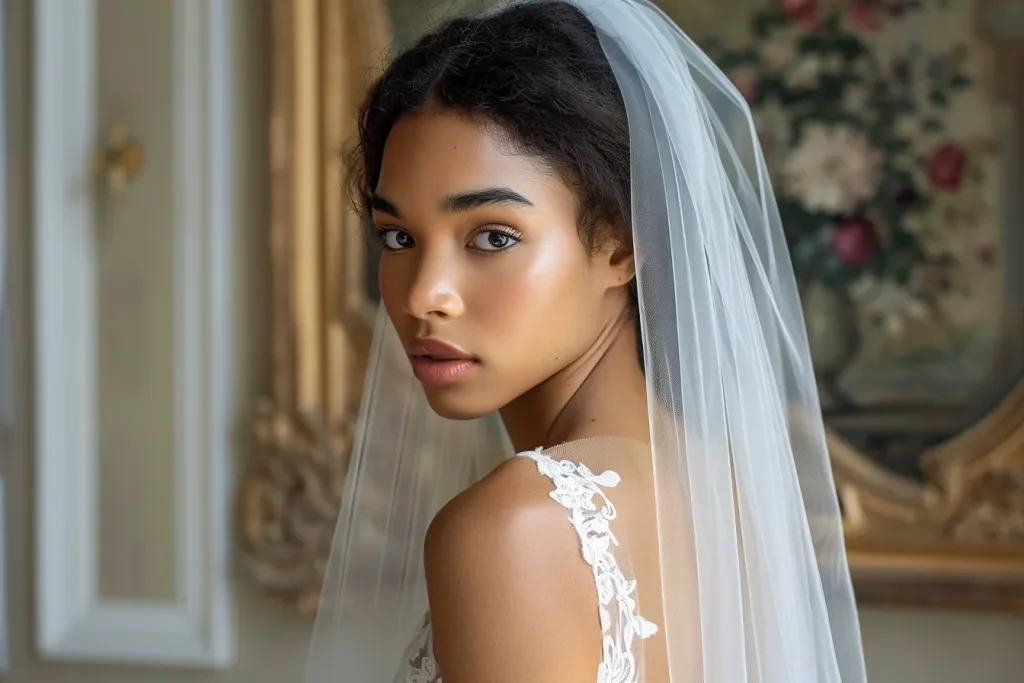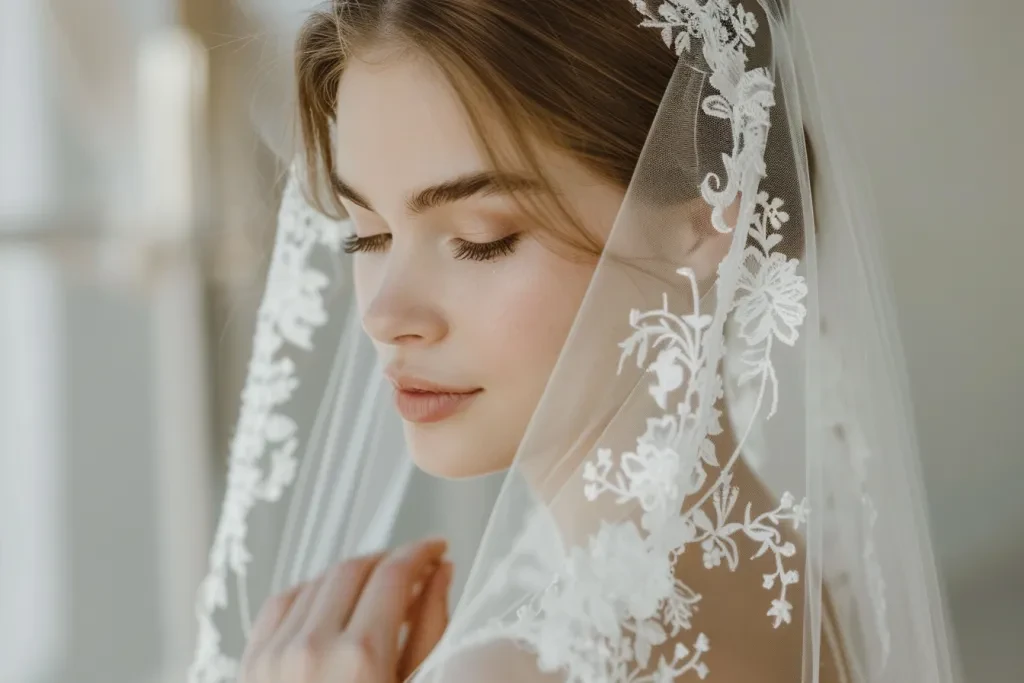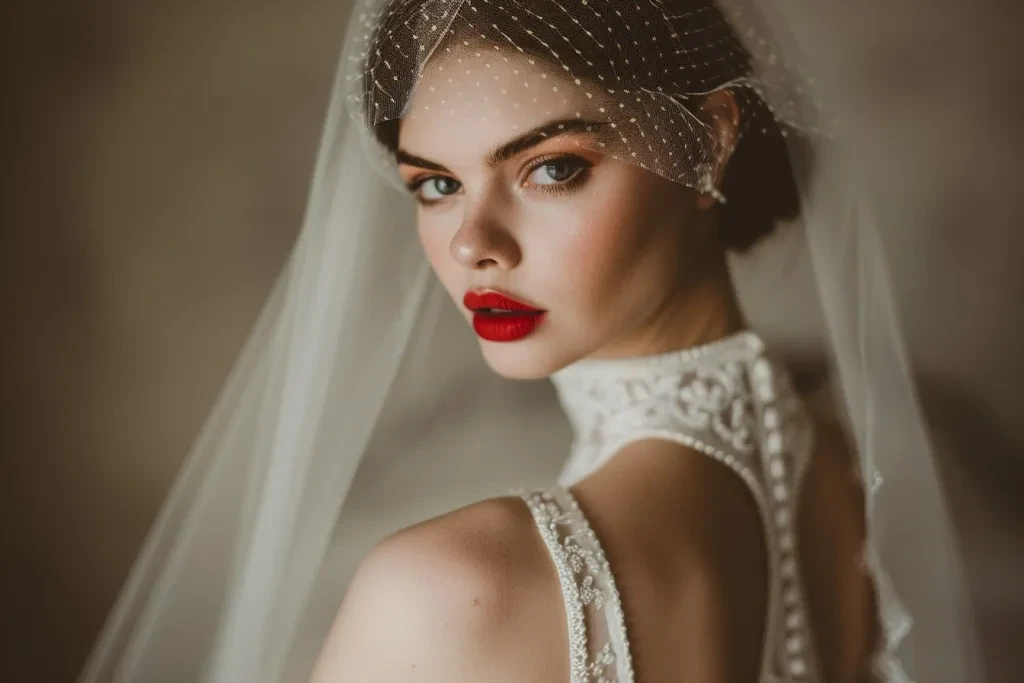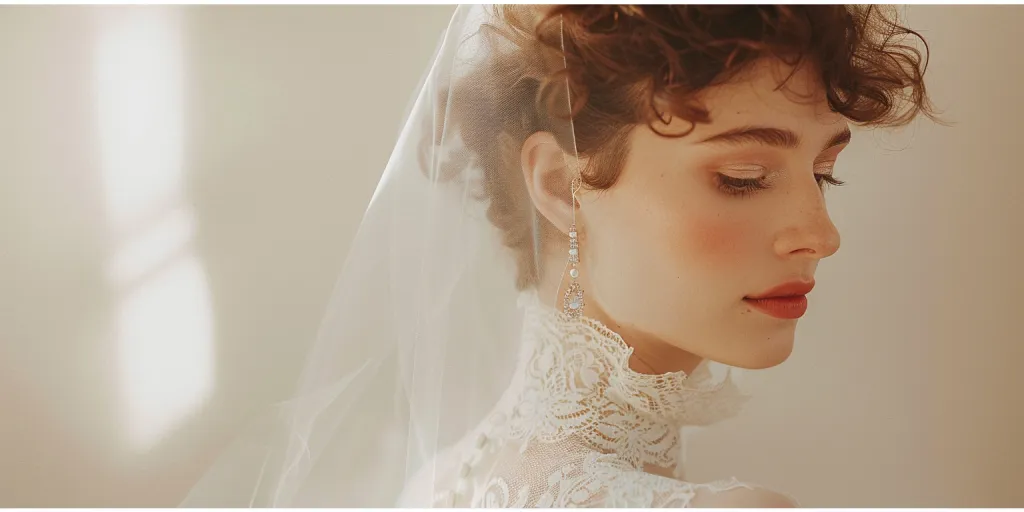Bridal veils have long been a symbol of elegance and tradition in weddings. As the bridal wear market continues to grow, the demand for bridal veils remains strong, influenced by cultural traditions and modern trends. This article explores the global demand for bridal veils, key markets, and the impact of cultural traditions on bridal veil choices.
Table of Contents:
– Market Overview
– Emerging Trends in Bridal Veils
– Materials and Craftsmanship
– Buying and Sourcing Bridal Veils
– Conclusion
Market Overview

Global Demand for Bridal Veils
The global bridal wear market, including bridal veils, is experiencing significant growth. According to Research and Markets, the bridal wear market is projected to grow by $13.6 billion from 2023 to 2028, with a compound annual growth rate (CAGR) of 4.34%. This growth is driven by increased spending on weddings and the rising adoption of multichannel marketing strategies. Bridal veils, as an essential part of bridal attire, are benefiting from this upward trend.
Key Markets and Regional Trends
The demand for bridal veils varies across different regions, influenced by cultural preferences and economic conditions. North America and Europe are significant markets for bridal veils, with a strong emphasis on traditional designs. In contrast, the Asia-Pacific region is expected to be the fastest-growing market, driven by the increasing number of weddings and the influence of Western wedding traditions.
In the United States, the number of marriages surged from 1,676,911 in 2020 to 1,985,072 in 2021, as reported by the National Center for Health Statistics. This increase in weddings has positively impacted the demand for bridal veils. Similarly, in China, the bridal wear market is forecasted to grow at an impressive 6.1% CAGR, reaching $8.8 billion by 2030, according to Research and Markets.
Impact of Cultural Traditions on Bridal Veil Choices
Cultural traditions play a significant role in shaping bridal veil choices. In Western cultures, veils are often seen as a symbol of purity and modesty. Traditional long veils, such as cathedral and chapel veils, remain popular choices for brides seeking a classic look. In contrast, modern brides are increasingly opting for shorter veils, such as birdcage and blusher veils, to complement contemporary wedding styles.
In Asian cultures, bridal veils are often incorporated into traditional wedding attire. For example, in Chinese weddings, the bride may wear a red veil as part of her traditional qipao or cheongsam. In Indian weddings, the bride’s veil, known as a dupatta, is an integral part of her bridal ensemble, often adorned with intricate embroidery and embellishments.
The influence of celebrity weddings also impacts bridal veil trends. High-profile weddings, such as those of Meghan Markle and Priyanka Chopra, have set new trends in bridal fashion, including the choice of veils. Meghan Markle’s minimalist veil with floral embroidery inspired many brides to opt for simple yet elegant designs.
Emerging Trends in Bridal Veils

Modern Designs and Innovations
The bridal veil, a timeless symbol of elegance and tradition, is undergoing a significant transformation. Modern designs and innovations are reshaping this classic accessory, making it more versatile and reflective of contemporary bridal aesthetics. According to the Curve New York S/S 25 Intimates report, the trend of “Everyday Bridal” is gaining traction, with bridal aesthetics seeping into mainline collections. This trend is characterized by the use of white, off-white, and blush tones, often finished with pearl detailing, delicate lace, and feminine frills. These elements are now being incorporated into bridal veils, creating pieces that are not only beautiful but also versatile enough to be worn beyond the wedding day.
Innovations in bridal veils also include the use of playful placement embroidery, as seen in the works of Ukrainian brand Zhilyova, which creates functional basics with tongue-in-cheek embroidery. This trend is echoed by Germany’s Mey, which includes bright patterns that nod to playful and kitsch aesthetics. These modern designs are not just about aesthetics; they also focus on inclusivity and accessibility. For instance, Germany-based Anita’s bras feature Velcro straps and front zips to make them easier to take on and off post-surgery, a concept that can be adapted for bridal veils to cater to brides with different needs.
Influence of Celebrity Weddings
Celebrity weddings have always been a significant influence on bridal fashion, and bridal veils are no exception. High-profile weddings often set the tone for bridal trends, with brides looking to emulate the styles of their favorite celebrities. For example, the veil worn by Meghan Markle during her wedding to Prince Harry in 2018, which featured intricate floral embroidery representing the Commonwealth countries, sparked a renewed interest in personalized and meaningful veil designs.
The impact of celebrity weddings extends beyond the design of the veils themselves. The choice of materials, the length of the veil, and even the way it is worn are all influenced by what celebrities choose for their big day. This trend is likely to continue, with future celebrity weddings expected to introduce new styles and innovations in bridal veils.
Customization and Personalization
Customization and personalization are becoming increasingly important in the bridal industry, and bridal veils are no exception. Brides today want their wedding attire to reflect their personal style and story, and this has led to a rise in demand for bespoke veils. According to the Design Capsule: Women’s Modest Meta-Classical S/S 25 report, the trend of “Pretty Feminine” and “Pretty Extravaganza” is driving the popularity of ornate embellishments, such as floral appliqués and statement bows. These elements can be customized to create a unique and personal bridal veil.
The use of monogramming, personalized embroidery, and the incorporation of meaningful symbols or motifs are all ways in which brides are making their veils uniquely their own. This trend is not just about aesthetics; it also adds a sentimental value to the veil, making it a cherished keepsake for years to come.
Materials and Craftsmanship

Popular Fabrics and Embellishments
The choice of materials and embellishments plays a crucial role in the design and appeal of bridal veils. Popular fabrics for veils include tulle, lace, and silk, each offering a different look and feel. Tulle is lightweight and airy, making it a popular choice for long, flowing veils. Lace, on the other hand, adds a touch of vintage elegance and can be used to create intricate patterns and designs. Silk is luxurious and smooth, often used for more structured veils.
Embellishments such as pearls, crystals, and embroidery add a touch of glamour and sophistication to bridal veils. According to the Catwalk City Analytics: London Women’s S/S 25 report, embellished details are key to this season’s day-to-night collections, adding enough interest to take staple silhouettes into a variety of occasions. This trend is reflected in bridal veils, with designers incorporating sparkling surfaces and metal hardware to create veils that are both elegant and eye-catching.
Sustainable and Ethical Production Practices
Sustainability and ethical production practices are becoming increasingly important in the fashion industry, and the bridal sector is no exception. Brides today are more conscious of the environmental impact of their wedding attire and are seeking out sustainable and ethically produced options. According to the Design Capsule: Women’s Modest Meta-Classical S/S 25 report, value-hacking opportunities will be a priority for consumers seeking to honor traditions while getting the most for their spending. This includes opting for materials and production methods that present the least environmental risk.
Sustainable bridal veils are often made from organic or recycled materials, and the production process is designed to minimize waste and reduce the carbon footprint. Ethical production practices also ensure fair wages and safe working conditions for the artisans who create these beautiful pieces. This trend is not just about being environmentally friendly; it also adds a layer of meaning and responsibility to the bridal veil, making it a more thoughtful and considered choice.
Handcrafted vs. Machine-Made Veils
The debate between handcrafted and machine-made veils is an ongoing one, with each option offering its own set of advantages. Handcrafted veils are often seen as more luxurious and unique, with each piece being a one-of-a-kind creation. The craftsmanship involved in creating a handcrafted veil adds to its value and appeal, making it a cherished keepsake for the bride.
Machine-made veils, on the other hand, are often more affordable and accessible. They can be produced in larger quantities and are typically more consistent in terms of quality and design. However, they may lack the personal touch and uniqueness of a handcrafted veil.
Ultimately, the choice between handcrafted and machine-made veils comes down to personal preference and budget. Some brides may prefer the bespoke nature of a handcrafted veil, while others may opt for the convenience and affordability of a machine-made option.
Buying and Sourcing Bridal Veils

Key Suppliers and Manufacturers
When it comes to sourcing bridal veils, there are several key suppliers and manufacturers to consider. Brands such as Noblesse Oblige, Aubade, and Atelier Amour are known for their high-quality bridal accessories, including veils. These brands offer a range of styles and designs, catering to different tastes and preferences.
In addition to established brands, there are also many independent designers and artisans who create bespoke bridal veils. These designers often offer a more personalized service, working closely with brides to create a veil that perfectly complements their wedding attire.
Quality Assurance and Certifications
Quality assurance is a crucial aspect of buying and sourcing bridal veils. Brides want to ensure that their veil is made to the highest standards and will look beautiful on their wedding day. This is where certifications and quality assurance processes come into play.
Certifications such as the Global Organic Textile Standard (GOTS) and Fair Trade certification provide assurance that the materials used in the veil are organic and ethically produced. These certifications also ensure that the production process meets strict environmental and social criteria, giving brides peace of mind that their veil is both beautiful and responsibly made.
Tips for Wholesalers and Retailers
For wholesalers and retailers looking to stock bridal veils, there are several key considerations to keep in mind. Firstly, it is important to stay up-to-date with the latest trends and innovations in bridal fashion. This includes keeping an eye on celebrity weddings, fashion shows, and industry reports to identify emerging trends and popular styles.
Secondly, offering a range of options in terms of materials, designs, and price points can help cater to different customer preferences and budgets. According to the Curve New York S/S 25 Intimates report, the trend of “Everyday Bridal” is driving demand for versatile and affordable bridal accessories, making it important to offer a variety of options to meet this demand.
Finally, building relationships with reputable suppliers and manufacturers is crucial to ensuring a consistent supply of high-quality bridal veils. This includes conducting thorough research and due diligence to identify suppliers who meet the highest standards of quality and ethical production practices.
Conclusion
The bridal veil, a symbol of tradition and elegance, is evolving to meet the needs and preferences of modern brides. From innovative designs and the influence of celebrity weddings to the growing demand for customization and sustainable production practices, the bridal veil is being reimagined in exciting and meaningful ways. As the industry continues to evolve, it is important for suppliers, manufacturers, and retailers to stay ahead of the trends and offer a range of options that cater to the diverse needs of today’s brides. Looking ahead, the future of bridal veils is bright, with endless possibilities for creativity, personalization, and sustainability.





 বাংলা
বাংলা Nederlands
Nederlands English
English Français
Français Deutsch
Deutsch हिन्दी
हिन्दी Bahasa Indonesia
Bahasa Indonesia Italiano
Italiano 日本語
日本語 한국어
한국어 Bahasa Melayu
Bahasa Melayu മലയാളം
മലയാളം پښتو
پښتو فارسی
فارسی Polski
Polski Português
Português Русский
Русский Español
Español Kiswahili
Kiswahili ไทย
ไทย Türkçe
Türkçe اردو
اردو Tiếng Việt
Tiếng Việt isiXhosa
isiXhosa Zulu
Zulu